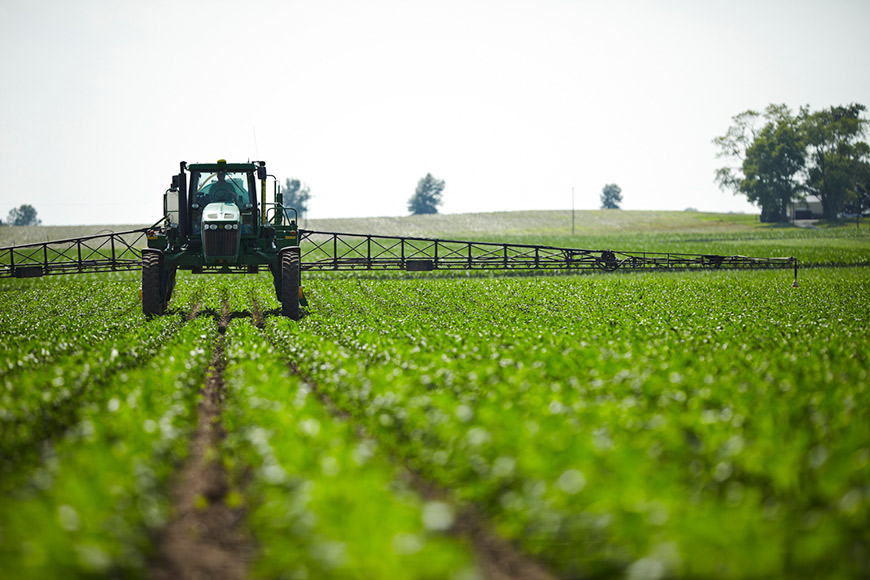Think Long-Term When Making Input Decisions

If you’re like most farmers, you’ve probably already done a good job at eliminating expenses that don’t deliver a significant return on investment at the end of the season. But it can be tempting to continue to cut inputs as a way to reduce costs even further. Sometimes those decisions can end up costing you more money in the long-run.
Here are some recommendations to help you maximize return-on-investment potential today while setting you up for success in the future.
Don’t skimp on weed control and fertility
When it comes to inputs, weed control and fertility are must-haves in order to get the most from your acres. Trying to reduce rates or cut herbicide or fertilizer applications not only means limitations for this year’s crops but also trouble for future crops. Weeds that aren’t controlled can increase the weed seeds in the soil, adding more weed pressure and boosting management costs down the road.
There are several steps you can take to optimize your fertility investment.
-
Soil sample and tissue sample — Sampling can give you a baseline for the nutrient levels in your soil and plants so that you can build a fertilization program that delivers only what plants need to maximize their potential.
-
Add nitrogen stabilizers — Whether you apply nitrogen in the spring or fall, adding a stabilizer can help ensure that nitrogen remains available in the root zone. Identifying where your risk of nitrogen loss is and incorporating a nitrogen stabilizer to your management plan to minimize that risk can help ensure plants have what they need to maximize yield potential.
-
Review hybrid response-to-nitrogen scores — One way to allocate your fertility dollars is by planning applications based on how your hybrids tend to respond to nitrogen applications. Answer Plot® research from 2019 showed a 30.8- to 104.9-bushel-per-acre yield response to nitrogen, depending on the hybrid.
-
Consider crop modeling tools — Crop modeling tools, including the R7® Field Forecasting Tool, can help guide the timing and appropriate rates of in-season nitrogen applications to help you fine-tune fertility plans based on conditions specific to your fields.
Manage fungicide applications on a case-by-case basis
Fungicide management isn’t as cut and dry as weed control and fertility. My recommendation is to review response-to-fungicide scores for the hybrids you’ve chosen. For those that show a high response, plan to apply a fungicide. Even in the absence of disease, those hybrids with a high response to fungicides are more likely to receive plant health benefits that can improve yield potential.
On the other hand, for hybrids with low response-to-fungicide scores or on acres with historically lower productivity, I’d consider taking a “wait and see” approach. Watch the weather conditions and scout fields to decide if a fungicide application makes economic sense.
Fine-tune decisions to increase cost efficiency
As mentioned, ag technology tools are now capable of delivering customized insights that can help fine-tune input decisions on an acre-by-acre basis. Using prescription services can help shift from an input-cost-per-acre mentality to an input-cost-per-bushel mindset. For example, the WinField® United Advanced Acre™ Prescription Program provides recommendations that are built based on over 6 million data points to support increased return-on-investment potential for input expenses.
For more information about the Advanced Acre Prescription Program or to discuss opportunities to maximize early-season input decisions, be sure to attend your local Answer Plot 2020 event for program demos.
All photos are either the property of WinField United or used with permission.
© 2020 WinField United. Important: Before use always read and follow label instructions. Crop performance is dependent on several factors many of which are beyond the control of WinField United, including without limitation, soil type, pest pressures, agronomic practices, and weather conditions. Growers are encouraged to consider data from multiple locations, over multiple years, and be mindful of how such agronomic conditions could impact results. Advanced Acre™, Answer Plot®, R7® and WinField® are trademarks of WinField United.





